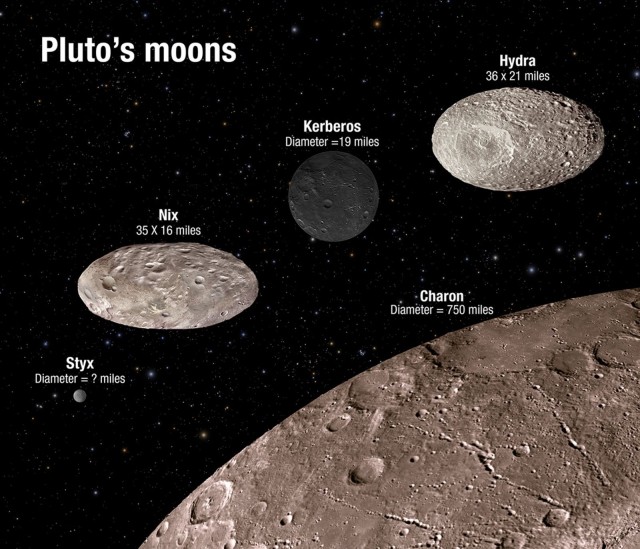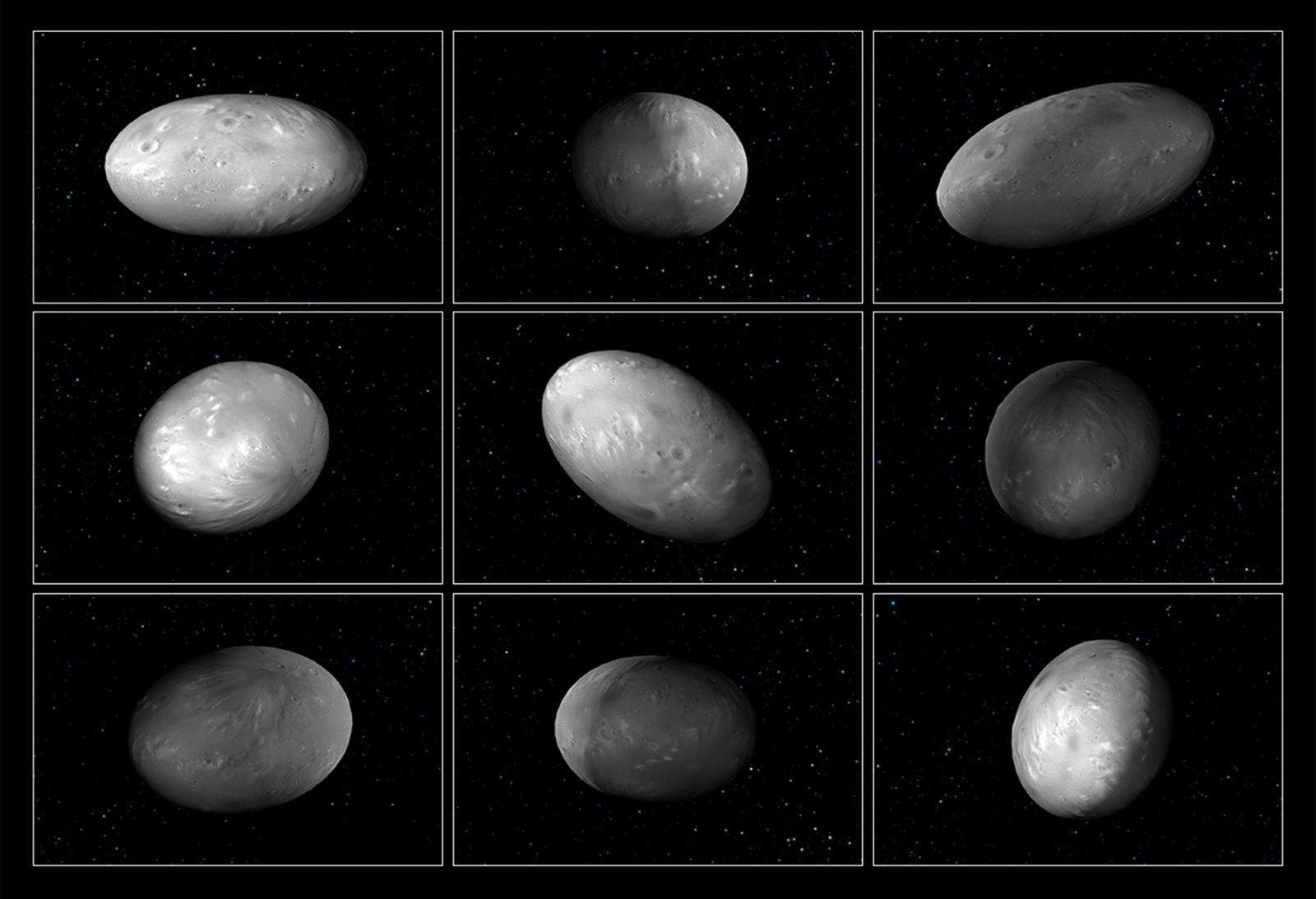Just because Pluto lost its planetary status doesn’t mean it’s any less interesting to astronomers.
NASA on Wednesday reported two football-shaped moons that wobble so unpredictably that the sun could rise in a different direction every day from either of the moons.
The Hubble Telescope recorded the oddball orbits of the oblong moons Nix and Hydra, which wobble because they are embedded in a constantly shifting gravitational field created by dwarf planet Pluto and its largest moon, Charon. Pluto and Charon share a common center of gravity.

Illustration: NASA
Excitement about Pluto has been building with the spacecraft New Horizons about to culminate a nine-year journey to fly past Pluto and Charon sometime next month.
The discovery of the moon’s quirky shapes and orbits were made by Mark Showalter of the SETI Institute and Doug Hamilton of the University of Maryland and will be reported on in Thursday’s issue of the journal nature.
Scientists believe the moons, which include two others, Kerberos and Styx, may have been shaped by a collision between Pluto and another planetary body early in our solar system’s history. The collision may have scattered material that consolidated into the system of moons around Pluto.
“Hubble has provided a new view of Pluto and its moons revealing a cosmic dance with a chaotic rhythm,” John Grunsfield, associate administrator of NASA’s Science Mission Directorate in Washington, said in a written statement. “When the New Horizons spacecraft flies through the Pluto system in July, we’ll get a chance to see what these moons look like up close and personal.”
The Pluto system is young in its discovery. Charon was discovered in 1978 and Hubble discovered the other moons after 2005. The moons were found while scientist scanned the path the New Horizons spacecraft would take, looking for potential hazards.
Pluto was discovered in 1930 and became the ninth planet from the Sun. Researchers in the 1970s began questioning its status as technology evolved to allow for greater exploration of the outer Solar System. Discoveries of other minor planetary bodies with Pluto’s characteristic prompted the International Astronomical Union to recognize Pluto as a dwarf planet.


